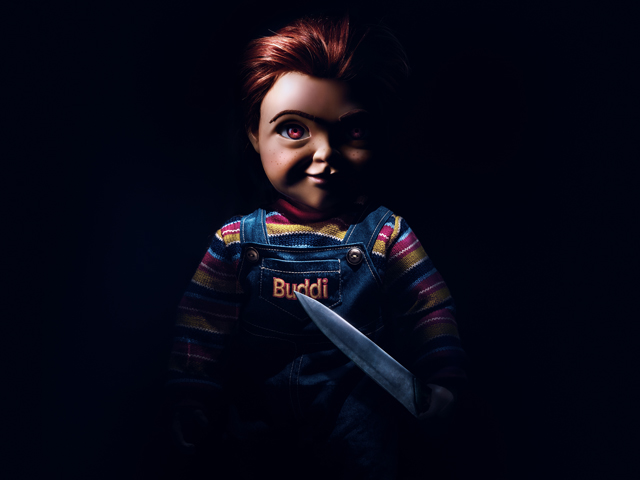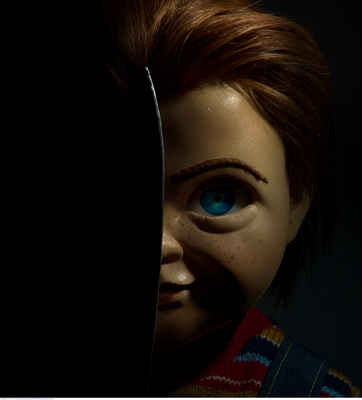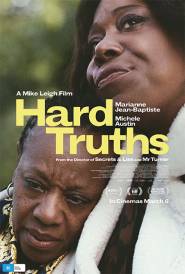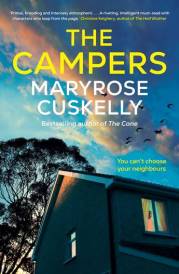Aubrey Plaza Child's Play

Wanna Play?
Cast: Aubrey Plaza, Brian Tyree Henry, Ty Consiglio, Gabriel Bateman, Beatrice Kitsos
Director: Lars Klevberg
Genre: Horror
Rated: MA
Synopsis: A contemporary re-imagining of the 1988 horror classic film, Child's Play follows Karen (Aubrey Plaza), a single mother who gifts her son Andy (Gabriel Bateman) a Buddi doll, unaware of its more sinister nature.
Child's Play
Release Date: June 20th, 2019
About The Production
Producer Seth Grahame-Smith was 12 years old when the original Child's Play was released and remembers being absolutely terrified by it, then watching it again and again. "I've been a fan ever since."
So when MGM and Orion Pictures brought up the idea that they wanted to update the original movie, Grahame-Smith and fellow producer David Katzenberg were initially apprehensive. "We didn't want to just remake the 1988 movie, which is a horror classic that introduced the world to one of greatest horror villains of all time. We wanted to introduce something new to it, something relevant to today's audiences."
They thought long and hard about what that might be. We live in a world where cameras and microphones are everywhere, and where our appliances talk to each other. Everything is interconnected. "We got excited by what it would mean for Chucky, if he were not just a kid's toy but a really high end AI product, like something you'd see from Apple or Amazon or Google " a child companion. What would happen if something with so much computing power and connectivity went bad, what would the possibilities be?" The producers then got excited about having something new to say, well-aware of the responsibility they had to longtime fans.
"In watching the original Child's Play, I was drawn to the idea that a toy, something that every child has and loves, can turn on you so quickly," says Katzenberg, "I was so frightened by that. It made me look at every toy in my bedroom differently; to this day I think it's frightening to think about." Now, when it comes to Chucky's updated reincarnation, that fear is expanded upon: "It's frightening to think that something we use for good every day, can potentially harm us."
The upgraded Chucky is far more advanced, adds Grahame-Smith, "he has more ways to kill you." He now has the ability to access other devices and look through them, and he can take over thermostats, vehicles, robot vacuums. "He can use anything at his disposal to terrorize and kill you." Meet Chucky 2.0.
Just six weeks after that initial meeting with MGM and Orion, Tyler Burton Smith had finished writing the script. "After watching every Chucky movie, he turned around and wrote an unreasonably good script in a very short amount of time," gushes Grahame-Smith.
Next, it was crucial to get the right director and they found their helmer in Lars Klevberg. "Someone who really responded to the script and had all the right ideas, all the right reference, and all the right energy and got the right tone," says Grahame-Smith.
Klevberg's agent told him that there was a planned remake of Child's Play, and asked him if he'd be interested in the project. Unbeknownst to Klevberg, however, the agent had already shown his previous film, Polaroid, to them, and the producers loved his work.
Katzenberg recalls their first meeting with Lars vividly. "I pulled over by the side of the road after leaving a meeting at a studio to talk to Lars on the phone. We thought we were going to have a 15-minute conversation and it turned into a 2-hour phone call." During their epic phone conversation, Lars has gone as far as playing music for a potential soundtrack and to set the tone of the scene. His passion came blasting through the phone. "We knew he was our guy."
Klevberg believes that both Grahme-Smith and Katzenberg epitomize the perfect producers.
"There's a big difference between people that just wanted to produce and producers that are creatively involved and support the director. The amount of support and freedom they have given me, whilst at the same time pushing me and checking and balancing, keeping my feet on the ground because I can quickly run off," says Klevberg with a laugh. "It's been extraordinary working with them and I'm in such an awe of them. They have given me so much inspiration and they are on top of their game, they know exactly what they're doing and how to handle it when things don't quite go as smoothly during the production"and nothing ever really does. They are not shy about jumping in to help. I couldn't ask for better producers."
For Klevberg, it was important for the story to have an authentic human connection and an emotional aspect that would resonate with audience beyond the scares. It has to have something to say on a deeper level. "To be honest, when I read the script, it was really, really good. It just had so much more to it. The way they tackled it in the script the way Chucky thinks and how he becomes the Chucky we know is very very interesting because it delved into the emotional context between the characters of Andy and Chucky."
Unlike its predecessors, in this version of Chucky we are very much aware of why he becomes evil, we understand his motivation " and that is something that Klevberg finds particularly frightening.
"We are dealing with an antagonist that you really get to know and we really understand why he behaves in the way he does, and it feels really possible and real. The way Chucky changes is really beautifully done and it's terrifying. I always always look at this this script as a Greek tragedy."
The movie evolves into a very real confrontation between Chucky and Andy where you understand both POVs, and might even feel more than a tinge of sympathy for the killer doll.
"Chucky turns evil because he is interacting with people and learning about how they're behaving. He wants to do something that he believes to be good, but his way of behaving is based on impulse [and a limited understanding of the world]." That's where things take a dark turn.
Child's Play scared Klevberg because it dealt with something that's meant to be there to comfort you. "As kid you imagine [dolls] being alive and you talk to them, and they protect you and all that fun stuff. But Child's Play showed us it could do the opposite, so that that scared me when I was kid."
Like Grahame-Smith and Katzenberg, Lars feels a great responsibility to do right by Chucky. "You have to be able to respect its origin, but at the same time you need to make it your story and you need to make the story that a brilliant writer has put on the page. It is your responsibility to create that story first and foremost and at the same time try to keep some of what made the original so popular." He cites E.T., the Swedish version of Let the Right One In, Frankenstein by Mary Shelley, and even Pinocchio, as some of his influences for the film. Nine months later, after that initially meeting, the Child's Play team was on location in Vancouver, British Columbia, shooting, "It really came together in a way that's really fortuitous and makes me feel grateful," says Katzenberg.
Making sure that the film is scary, of course, was an integral part of the equation and it's not always easy to figure out when a beat or scene is meant to be properly tense because you're shooting out of sequence and the movie is being built piece by piece "so it was important to keep the overall vision in mind.
"There' a lot about the film that's going to scare the audiences," insists Grahame-Smith, "The scary moments, the psychopathic killer doll, and also the plausibility of it. When they get home they will realize that a lot of this technology is already in their homes and in their lives and what if it turned against them and decided to go on a killing spree, that's the fun of it and the relevance of it…One thing that wasn't true in 1988, but is true in 2019 is that the Chucky we have today can actually kill you."
Grahame-Smith hopes that audiences will continue thinking about it and be scared long after they come home. "We want this movie to be fun, darkly funny, scary, disgusting, terrifying, and surprisingly at times emotional. We are making this movie for a packed movie theater experience that everyone can share together."
Casting
When it came to casting the film Grahame-Smith says that they "wanted to make a movie better than anyone expected, than it had any right to be." Part of that was finding talented and unexpected actors that could really deliver the emotional resonance the film needed and breath life into their roles.
For Aubrey Plaza, who is best known for her comedy chops, this was a first-time journey into horror films " which her older sister forced her to watch as a child. Plaza admits that she likes being scared but that a lot of horror films don't appeal to her because they are just about violence, torture, and killing people. She's turned down a lot of horror films in the past. "I'm not really interested in running from someone who's going to try and stab me," she says, "But if it's a doll, I'm down." It didn't take long for Plaza to warm her way into the genre, either. Her very first take involved an intense scene that had her tied up and hanging with a noose around her neck in a creepy warehouse, covered in blood and muck. Or, what she calls: "Creepy nightmare stuff."
The movie also presented an opportunity for her to delve into a different kind of character than she's used to. "When I read the script I was very excited about playing the role of Karen because it's such a different part of me," she recalls, "I haven't played a mom yet, so the idea of playing a young single mom really appealed to me." Plaza's own mom was young when she had her, which brought an additional layer of connection to that aspect of the relationship in the film. "The part was an opportunity to dig a little deeper and create a person in the world of the film that you'd like and root for. Someone who has a sense of humor but is also kind of down in the dumps and trying to survive."
When the producers heard that Plaza was interested in the project, it was a no brainer for them. "We were thrilled," recalls Grahame-Smith, "I don't think we chose Aubrey Plaza. I think she chose us." This was an unexpected casting choice. On the one hand, it was a seemingly different role for her, on the other, it was so easy to envision. "It's been one of my favorite things about the movie, watching her perform and bring this character of Karen to life. We've been fans of hers for a long time. She's brought an incredible amount of intellectual and emotional energy to the movie."
In the movie, Plaza plays Karen, a working single mother doing her best to provide for her son Andy. It's not always easy and she works hard and tries to be there for him. She wants him to experience life, make friends, and give him things she can't necessarily afford. When to her great joy she's able to get her hands on a popular returned toy and gift it to her son, the best thing that can happen instead turns into nightmare.
Karen's son Andy is played by Gabriel Bateman with whom Plaza formed a quick bond, resulting in outstanding on-screen chemistry. They first met in the airplane on the way to Vancouver. Gabriel was seating behind Aubrey – and it happened to be his birthday. Aubrey had just finished reading a young adult novel she loved, so, whilst Gabriel was a sleep, she gifted him the book along with a note, sliding it under his tray. The duo spent a lot of time getting to know each other off-set, partaking in activities like hiking, playing pool, rock climbing, watching movies, visiting old churches, and bowling. "He'd probably tell you that I sucked at bowling but he's wrong," Plaza remarks dryly, "cause he's the one who sucked."
But, Plaza concedes, "Gabriel's a movie star. He's ridiculously talented and he likes to prank me and tell me I'm not good at things, but that's because deep down inside he loves me and knows that I'm better than him. We have a special relationship; we just keep trying to knock each other down. But I'm bigger than him, so he's toast."
Joining in on the mischief on set is Brian Tyree Henry who plays Detective Mike Norris, a city cop that grew up in the building that Andy and Karen move into. He's a blue-collar, by-thebook kind of guy. "When we saw Brian play Mike for the first time, we just looked at each other, something clicked," recalls Katzenberg, "He brought so much that we probably didn't think even existed, and his chemistry with Aubrey and Gabriel is incredible, we are tremendously lucky to have all of them."
Grahame-Smith agrees: "Brian is like a walking Child's Play encyclopedia, he's a true dyedin-the-wool fanatic. He knows everything you could possibly know about the film."
 Tyree Henry couldn't agree more. "I'm THE horror guy, ask anyone who knows me and they'll say that this is my genre, this is it."
Tyree Henry couldn't agree more. "I'm THE horror guy, ask anyone who knows me and they'll say that this is my genre, this is it." When he was first approached to do the film by his team, it didn't take him long to finish reading the script. "It's Chucky!" he exclaims with glee. "I have vivid memories about Child's Play when it came out in 1988. I was six and was raised in a household of sisters so they had no problem showing me horror to torture me, but to their chagrin, I loved this movie." He'd make his poor siblings rent the movie over and over again as he'd get right up to the screen a watch it. He's seen every single movie in the series. As a mega-fan, it didn't take him long to jump aboard.
"Everyone here is fans of the genre, of Child's Play, and Chucky which is cool because everyone is feeling the same sort of passion for the project," says Katzenberg.
"I'm amazingly happy with all the cast in this movie, they were all my first picks and have so much good chemistry together," says Klevberg, "I think they will make the movie so much better and more elevated than it even already is " they bring it to life."
The crucial role of the voice of the iconic killer doll Chucky was the last cast and the filmmakers found him in landing legendary actor and voice artist Mark Hamill.
GrahameSmith noted, "We asked, thinking there was no way it would ever happen and he said, 'Yes.' He was the first choice, a big swing, and it just happened." On working with Hamill on the project and watching him voice Chucky. "I mean, first of all, to have an icon reimagining an iconic character is an incredible gift," said Grahame-Smith, "and to have an actor and a voice performer who is a celebrated as Mark Hamill, and as gifted as he is, I mean it's incredible. He's taking on this challenge with a huge amount of energy and really come at it in a very serious way. And it's really something to watch him create a character, and sort of embody it, and I get to sit there and watch Mark Hamill record. It's just incredible."
"I never obviously thought Mark Hamill would ever be in this movie when writing it," said writer Tyler Burton Smith. "It's Mark Hamill! When I was writing it, I hadn't thought who the voice would be. As soon as they told me, it was perfect. It fits this version of Chucky perfectly. It has a distinct feel that's different from the original but still feels very much Chucky. It's really exciting."
This may be a Chucky movie with plenty of humor and horror, but at its core, it has to have an emotional conflict between the characters. "The cast is able to bring that out in a way that you can't prepare yourself for," says Klevberg, "The best part of being a director is if you are getting surprised on set by the things your actors bring to their characters. When you're dealing with great actors, they do that and that's probably the most satisfying part of this job. They bring their creative side into it and that's the best part because it's a team effort and I'm just the filter so that the vision gets fulfilled."
Sinister Tech
"I've got something for you," says Plaza as Karen to Andy in a scene, but she breaks character to add: "It's an evil doll that's going to kill us." But whilst the original Chucky was a serial killer who terrorized us through the body of a doll, the Chucky of 2019's Child's Play is one that plays on our fears today.
"We really do give our lives to these machines, everything's in a cloud now and we are possessed by these belonging," says Tyree Henry. "That's something that's so fascinating about the reimagining of Child's Play" even the adults are susceptible to the Child's Play of it all…we are pretty much slaves to technology."
He recalls a story he'd read about a child's first words being Alexa because the child has heard the parents so much. "He probably thought it meant I love you," says Tyree Henry. "I always have a weird time seeing a kid just go 'hello google do this, ok google turn this…' " they have more of a relationship with these machines than they do with actual human beings."
One thing that Tyree Henry really responded to in the script was just how much we as the audience end up emphasizing with Chucky. "I care about Chucky a lot in this movie. He's a product, but he's also a product of the programming and that's what's so sad about it. This doll has been programmed to be the best friend to this kid " it's kind of a love story in a way," he says with a laugh, "Chucky has many emotions and he's learning "when it starts to learn things is when it starts to be terrifying."
The message of the movie hits a chord with Plaza, too. "I have a very personal disgust of the technology and devices we're all addicted to," she says, "it's not very apparent now what kind of affect it's having on society but eventually I think we'll look back and go, 'wow, that really got out of hand,' so maybe this movie is foreshadowing."
Designing A World With Texture
When Klevberg came on board Child's Play, he set out to create a world that largely is seen and experienced through the eyes of a child. "An early directive from Lars was that it's a kids' movie primarily and he wanted to reference the Amblin movies of the 80s," says production designer Dan Hermansen (Deadpool 2, "A Series of Unfortunate Events"), "There's a slightly nostalgic look even though we are dealing with contemporary"or even more advanced" technology."
Hermansen sought out to create a world that's a bit more lived in, with a real sense of history, and an aging texture. "Our world is an older world where things are a bit more tired and romanticized. Nothing is really new and shiny," he says, "Everything has character and patina to it."
The warmth of the spaces counters the tension of the horror that occurs in the story of the film. "A lot of it for me is finding the places and things that convey the [right] emotion," says Hermansen, "So I'm always looking for that thing that gives me the emotion I'm looking for." When Andy and his mom Karen move into an old apartment building, there's a sense that it was once a grand place that's been there for a long time and has fallen on hard times. There's wallpaper peeling off, notices, worn carpets, dim lighting, and, one would imagine, curmudgeonly neighbors"or worse.
Zed-Mart, the store that sells everything and where Karen works the daily grind, is set in an older, tired-looking building from the 60s with some great period architecture. "It's a store that has seen better days and times economically. It's not going to feel so pristine. It's not a perfect world."
In the Zed-Mart warehouse, which also happens to be one of Klevberg's favorite sets, Hermansen amped the creep factor with dismembered dolls and toys, shadows, and plenty of smoke. "It's an environment that's experienced through a child's eyes, so it's kind of horrific," he says, "Broken world, broken toys."
It's all about finding small touches to help create that sense of foreboding " like the unsettling masks in Andy's room. "Lars is very attention to detail oriented. He pays attention to everything. He's got a great definite vision of what he wants, so it's easier to get there and make his vision come to life."
Getting The Look
Director of Photography Brendan Uegama was no stranger to moody, dark lighting having previously worked on shows like the "Chilling Adventures of Sabrina" and "Riverdale." Both he and Klevberg wanted to capture a natural look that danced on the edge of mercurial darkness, but also bringing a pop of color into it.
The duo pulled reference images from many places, looking at hundreds if not thousands of photos. A major point of inspiration became were some of Spielberg's films in the 80s, ET, and others.
"In Andy's room there's a lot of color," explains Uegama, "We pushed light through the window, making his room feel a little safer and have a magical vibe, whereas when you get out on the streets and other areas it should feel a bit greyer and ran down."
Growing up, a child's room is one of his favorite places. "For me, I made my room kind of special by putting up things I liked in it, that we were part of me, and I guess made it feel a little safer. In the movie that's a major place where Chucky and Andy bond and become good friends early on. So it was always a place where when Andy's uncomfortable outside or inside the house with Shane there [his mother's boyfriend], he can go to his room and it feels a little more safe."
The magic, however, comes to life once Chucky begins to blend into the mundane environment of the character's everyday lives. "There's this toy coming alive and becoming Andy's friend," says Uegama, "Letting that friendship blossom, really made that room have its own character."
There's no shortage of smoke in the movie and if you ask Lars, there's never enough smoke on set. "I'm a huge fan of the old Italian painters and film noir," he says, "I love the contrast and the film will certainly have its dark moments, but it also has a poppy look which I think is very interesting."
The smoke helped Uegama create a texture that helped the film feel more three dimensional and alive, and less stage-like. "It just makes it feel more tangible," he explains, "It gives depth and layers and complexity to the image."
It was all about creating layers. Whether that meant having clutter and walls be less than pristine, or using lighting to create dozens of shadows that could be hiding something in order to build tension. There's something always lurking in the shadows. "Sometimes it relies more on the lighting, like the set being lit by just a few in-scene lamps," explains production designer Dan Hermansen, "There's a lot of light and dark in this movie. Lots of shadows."
The camera, too, was an accomplice when it came to building suspense. "The horror film element would take over and we would just creep the camera a little bit more to build tension, or adjust the pacing of the cast," says Uegama, "Lars would get them to move a little slower, talk a little slower…" During scenes when the kids were just playing around, the camera would too move around a little quicker, panning around a little more freely. Working with the Chucky doll presented its own unique set of challenges. For one, it takes extra time, and production was always racing against the clock. "It's not an actor who can just walk in and move around," suggest Uegama, "He has to be placed and walked in and you have to do clean slates and things like that, so everything would just take a little longer." Then there are multiple puppeteers below the frame moving different parts of his body, which often would dictate how a shot would be framed.
At the same time, says Uegama, it was special to get to see Chucky come alive. And just like Pinocchio, who was a character reference for Lars, as the shoot went on Chucky became more advanced and capable. "This doll starts a little more rigid and not so perfect and then kind of becomes a little more live and come to own his personality more, be his own person." After reading the script, it quickly became very clear to Klevberg what he'd like it to look like and he worked with a concept artist in the months leading up to production, refining the look of the doll, considering how the packaging would look and how the face would reflect that it's being sold in 2019. Ultimately, says Katzenberg, Chucky has to be likable enough that parents would want to buy it for their kids and it has to be cool enough that kids would want it.
"You're taking something so iconic and you want to bring something new to it but at the same time respect the legacy of Chucky," says Grahame-Smith, "What would he need to do and look like so that kids would want to hang out with this thing. That's what really drove this design process." Although the final version of the doll will be altered in VFX and digitally enhanced, a practical animatronic doll was used whenever possible.
For Klevberg, the visual storytelling harkens back to old Hitchcock movies, which he happens to be a huge fan of. "And of course every scene Chucky's in is interesting for me from a director's point of view because I'm dealing with an antagonist that slowly turns to its dark side."
The Prank Wars
It all began innocently enough. Aubrey Plaza decided to wake up early and hide in her onscreen son, Gabriel Bateman's van, in an attempt to scare him. To her chagrin, the attempted prank did not go over well. "I'm not scared," said Bateman calm after Plaza jumped out, "Not even a little bit." Next time, he suggested, she should warn him so he can pretend to be scared. The stakes had to be raised. And so, the prank wars began. Brian Tyree Henry couldn't resist joining in. During a take, as the kids exited the elevator, he hid in the shadows, jumping out at an opportune time, causing some startled screams. The crew and director were in on it.
Things continued to escalate. Creepy objects and notes were left in trailers, cast members would hide in closets, and on Halloween, Plaza dressed up in a creepy outfit, walking around set with a knife and the soundtrack to Psycho playing. Upon finding out that his scene was moved on Hollow's Eve, Bateman couldn't resist making an appearance and was transformed by a talented team of makeup artists into a real-life Chucky. The kids' on-set teacher even made a Chucky piñata, which they all proceeded to gleefully smash to bits, blindfolded.
"I worked on sets for many years as a PA and 3rd AD and I've always wanted to work on sets where this kind of stuff is allowed, so I'm a fan of that," admits Klevberg. "This is group of kids and adults that are going to charm the viewers and make sure that the audience connects with them in order to relate to the story. It's important that they have good chemistry and pulling pranks and having a good time on set, brings them all closer together."
Katzenberg notes, "there's this comradery amongst the actors that carries outside of the stages and our sets and there seems to be a prank war going on. As long as they are having a great time and bonding off set, it helps us."
Child's Play
Release Date: June 20th, 2019
MORE



